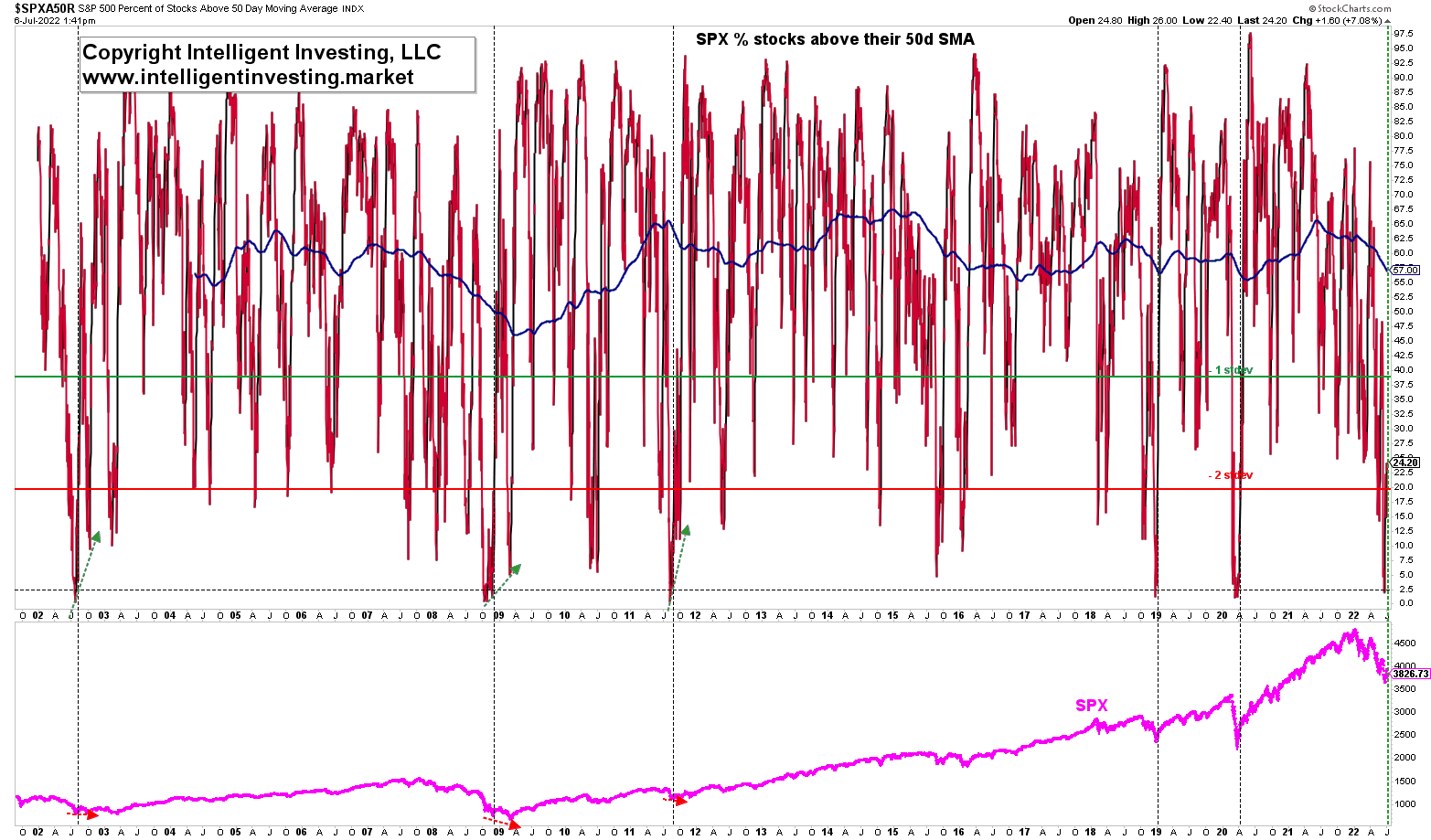One must be living under a rock not to know the major stock indexes have been declining almost relentlessly during the first half of this year. I found that these indexes may be in prolonged bear markets (see here, here, and here). However, even in bear markets, there are plenty of opportunities to profit, even to the upside.
From that perspective, I found that the percentage of stocks in the S&P 500 above their 50-day simple moving average recently gave a rare signal: it went from below 2.5% to above 20% by June 24th. Green dotted vertical line in Figure 1 below.

Since data only became available in late 2002, this condition has only happened five times (see figure 1 above).
Although 20 years of data is not a very long record, considering the S&P 500 index has been around since 1957, it is still a periodic signal as it captures two bear and two bull markets.
Three of these conditions led to a shorter-term relief rally, followed by one last lower low several months later (2002, 2008-2009, 2011), whereas to were after immediate bottoms (2019 and 2020). The former three signals are shown with the green and red dotted arrows: the percentage of stocks above their respective 50-d SMA improved while price still declined, aka positive divergence.
Regardless, in all five cases, the SPX rallied for at least one year before the subsequent more considerable decline would set in and result in a new signal.Here are the performance details*
- 2002: 15% downside risk over two months vs. 76% upside reward over 60 months
- 2008-2009: 25% downside risk over 2.5 months vs. 40% upside reward over 16 months
- 2011: 10% downside risk over 1.5 months vs. 145% upside reward over 86 months
- 2019: no downside risk and 33% upside reward over 13 months
- 2020: no downside risk and 75% upside reward over 20 months
*downside risk = from the day the signal was given to the secondary low.
*upside reward = from the day the signal was given to the high from where the next larger decline would start, resulting in a new signal.
Since the first two occasions were at the end of two bear markets (year+ declines with an >40% drawdown), whereas the other three occurred during the most recent bull market (only multi-month decreases of less than 40%), it is better not to lump these five signals together. It would be comparing apples to oranges.
Although, as they say, “past performance is no guarantee for future results,” especially since the markets could be in a bear market of a degree not seen since the 1930s, we must acknowledge there currently is a signal similar to those that led to outstanding longer-term low-risk, high-reward setups. Since trading and investing are not about opinions but all about having reliable entry- and exit signals while consistently placing portfolio-appropriate stops, the current condition could be one for the history books.
